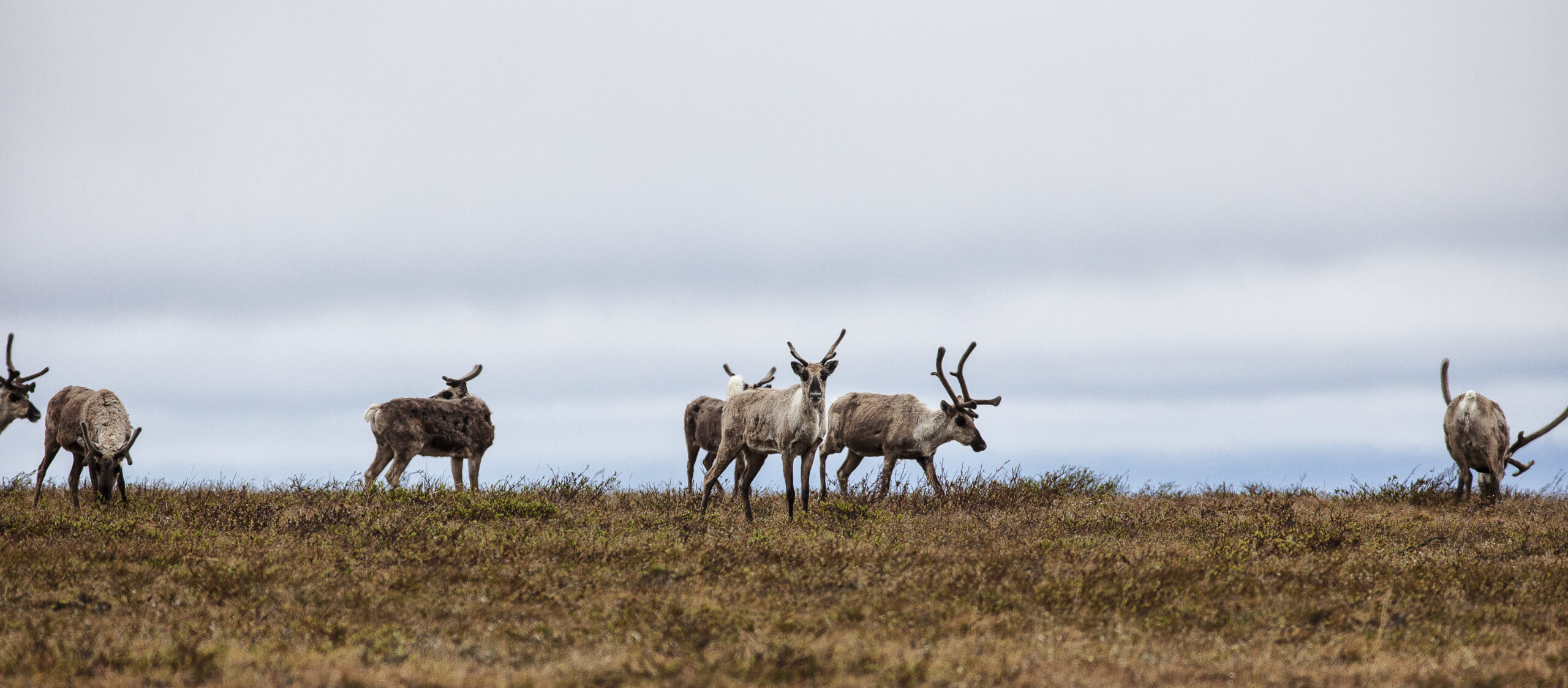The Biden-Harris administration will scale back but approve the proposed Willow Project on Alaska’s North Slope, the largest pending oil and gas development in the United States, according to reports published by The New York Times, Bloomberg, and other news organizations.
The development by ConocoPhillips would be located west of the Prudhoe Bay oil field, in the twenty-three million-acre National Petroleum Reserve, a vast and largely wild swath of the nation’s forty-ninth state. At peak operation, it is expected to produce 180,000 barrels of oil each day.

ConocoPhillips had proposed five drilling pads at the site.
The U.S. Bureau of Land Management, in an environmental review released in February, proposed a smaller “footprint” of three drilling pads able to accommodate two hundred and nineteen wells. White House aides, seeking to mollify environmental groups, have floated the idea of two drilling platforms.
As draft decision documents circulated Friday, White House press secretary Karine Jean-Pierre told reporters that “no final decisions have been made.”
Furious lobbying has continued by both proponents and opponents of a project that would be located in one of the most remote corners of America.

The Alaska congressional delegation has mounted a full-court press for Willow, enlisting backing from organized labor, mayors of nearby Indigenous villages, and unanimous resolutions of support from the Alaska Legislature and University of Alaska Board of Regents. The delegation met recently with President Biden at the White House.
New Democratic Representative Mary Peltola tweeted: “Encouraging news on Willow today – seems like the Administration is taking Alaskans’ support for this project seriously. I don’t want to jinx anything but I hope the Administration stays the course and reapproves this project. Alaskans are watching.”
Senator Lisa Murkowski, R‑Alaska, has pressed for Willow, describing the development as “meticulously planned, socially just and environmentally sound.” She has pressed for three drilling sites, saying: “Willow is too important to Alaska’s future to settle for anything less than an economically viable project.”
Three pads are “the minimum for Willow to remain economically viable,” Peltola said last month.
Environmental groups have campaigned against what the Sierra Club has described as “a climate disaster waiting to happen.” A change.org petition opposing Willow had drawn 3.1 million signatures and an estimated 1.1 million unique letters have descended on the White House.
Senator Maria Cantwell, D‑Washington, a strategist behind recent pro-preservation decisions in Alaska, has warned of climate consequences to the Arctic that would be “irreversible and irresponsible to future generations,” adding: “Oil companies already have record profits and access to drilling rights on millions of acres of public lands which they should be using to meet our current fossil fuel needs.”
As news organizations predicted approval of Willow, Senator Jeff Merkley, D‑Oregon, tweeted on Friday: “It’s a complete betrayal of Biden’s promise not to allow more drilling and a complete catastrophe to rein in climate change.”
The Biden-Harris administration has delivered a succession of pro-environment decisions in Alaska. It has used the Clean Water Act to reject a massive open pit mine proposed between two of Bristol Bay’s major salmon spawning streams. It has blocked further oil leasing in the Arctic Refuge. And it has reinstated the Clinton era “Roadless Rule,” blocking construction of new roads into old growth forests of Southeast Alaska’s vast Tongass National Forest.
“We’ve had decision after decision go against us and even this one – a socially just project located within a petroleum reserve – it’s perilously close,” Murkowski said in a recent speech to the Alaska State Legislature in Juneau.
The Willow Project was approved during the Trump administration. But a federal judge sent agencies back to the drawing board, finding analysis of environmental impacts inadequate and incomplete. The lands around ConocoPhillips’ proposed drilling sites comprise major migratory bird habitats – centered on Teshekpuk Lake — and are home to a major caribou herd, according to the BLM.
The Bureau of Land Management, in scaling back drilling sites, reduced by forty percent the impact on polar bear habitat.
But Willow will have impacts. The BLM’s preferred alternative would mean construction of thirty miles of gravel roads, 268 miles of individual pipelines, plus 431 miles of ice roads. The existing Trans-Alaska Pipeline would be used to ship oil south across Alaska to the oil port in Valdez.
ConocoPhillips had estimated the Willow site contains six hundred million barrels of oil. The cost of the project is estimated in the $6–8 billion range.
It would create about 2,500 largely union construction jobs, and generate an estimated $17 billion in revenue to the federal government, state of Alaska, and Alaska Native corporations.
It would, however, yield 9.2 million metric tons of carbon dioxide emissions a year, at a time when the Arctic is warming at a rate four times that of the rest of the planet. “I expect the unexpected and that our land will be completely unpredictable, in many ways, unknown to us because it’s changing so fast that our animals and our people cannot adopt,” in words of Siqiniq Maupin, a native of the area and director of Sovereign Inupiat for a Living Arctic.
The basic rationale for Willow: The United States will need oil, even as it transitions out of fossil fuel dependence.
As the BLM noted in its latest review, we can produce that oil domestically, or purchase it from countries with far less rigorous environmental protection.
“We are decades away from a time that we would be beyond oil resources: The need is very very much still there,” Murkowski recently argued.
If the United States approves a big new oil project, however, what message does it send to the rest of the world.
“The pollution it would generate will not only put Alaska natives and other local communities at risk, it is incompatible with the ambition we need to achieve a net zero future,” former Vice President Al Gore argued on Friday.
The Willow Project decision is, in a phrase made famous by Joe Biden, a big (expletive) deal.

